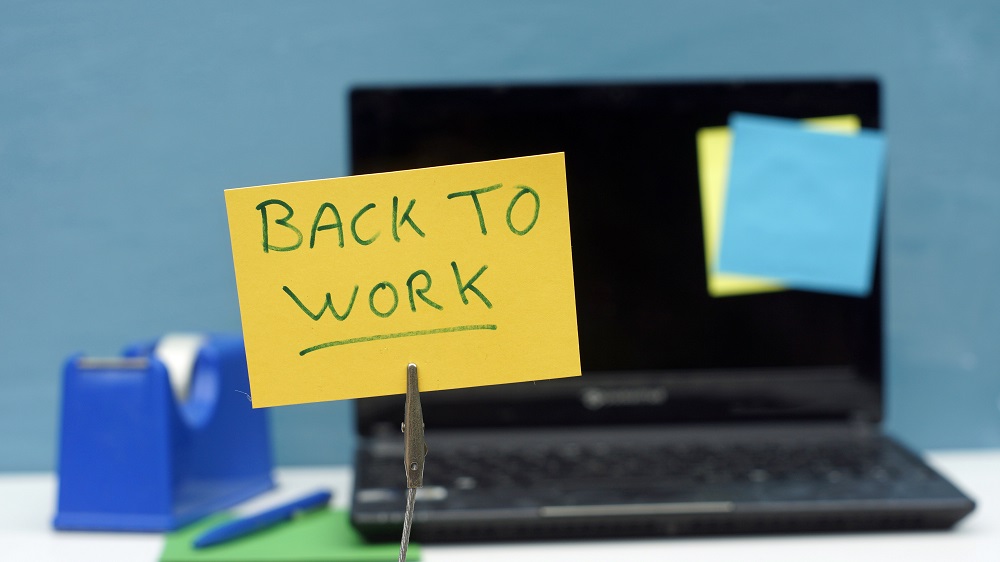Massachusetts could soon loosen the restrictions that have been in place since mid-March on several parts of our state’s economy, but anyone expecting a return to normal or even the much-maligned “new normal” could be in for a pretty large jolt of reality upon their first steps.
Just about nothing about the office experience we all got to know will be the same when we get the all-clear to try to pick up where we left off a few months ago, from the hesitancy and awkwardness around how to greet your colleagues to how many of our co-workers we’ll actually see on a regular basis.
[related]
Now that many of us have gotten used to working from home, the prospect of returning to the office comes with some level of trepidation, even as we look forward to gathering around the water cooler—or coffee machine for those of you with more refined palates—and talking about…whatever.
I’m warning my co-workers now: I’ve got a lot of Dad jokes saved up since mid-March and my audience has been limited since then so I might be dropping some awful puns and terrible one-liners on a regular basis once you see me again. What do you mean, “What else is new?”
Many companies will be employing a tiered approach to bringing their employees, meaning one team of workers will be in the office Monday, Wednesday and Friday, for example, and the other team will be there Tuesday and Thursday.
I’m not sure what that will mean for efficiency, but it could be better than having everyone scattered in their own homes, although it’s going to take us all a while to get used to what we do at the office after becoming “experts” at working from home lately.
Most employers could be more willing to let employees work from home more often now that they’ve seen it can work, even when it’s a last resort and the plan comes together haphazardly.
How AV Factors into Post-Pandemic Life
Will the future bring about smaller office spaces and shared desks to help companies save money on real estate and technology? I wonder how many of the people who’ve been wearing masks on every errand since the pandemic arrived on U.S. shores would feel good sharing a desk with anyone now.
It’ll be the same thing at restaurants, barber shops, hotels and sports arenas and convert venues once we’re able to get back there. We’re facing a lot of uncertainty and new behavior patterns and no one has the right answers on when it’s OK for us to act like we had the pandemic changed everything.
One thing that’s become certain is AV and IT will play important roles in whatever we’re facing in the future, even in areas we once thought impossible or never expected. We’re going to be more immersed than ever in AV, from doctor’s visits to flying to in-person trade shows to entering our office building.
I’m not thrilled about the prospect of my every move being tracked and it makes me uneasy to know the collected information will be used for something someday, but I think we’re all going to have to live with the changes on the horizon. After all, not many of us have a readily available apocalypse bunker.
One thing I think will be a huge benefit for the AV industry in the post-pandemic world is that people who never gave a thought to technology in the past now understand its power and capabilities and that should raise the profiles of AV integrators who too often saw their masterpieces lost in the crowd.
Maybe most people won’t realize it was an AV integrator who installed the digital signage screen that’s equipped with a hand sanitizer dispenser, but they’ll certainly appreciate it more than they did in the past.










